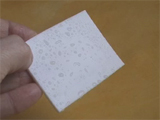Introduction
Preliminary note: The following is a reduced and, at times, less formalistic version of Chapter IV in the textbook. It does not cover the illustrative example 5, Boxes 4, 5 and 6, and subchapters IV.3.2, IV.3.4, IV.4 and IV.5 (color codes shall help you to decide how important it is to look at these parts of the script).
In one of the examples that we give in this chapter we are cheating you! See whether you can find out where. Never mind if you do not find it. The example is not misleading in a way that it would hamper your further understanding.
Environmental organic chemists often face situations in the lab or in the field in which rules-of-thumb to estimate the partition preferences of organic chemicals are extremely helpful: for instance, one may need to decide whether solvent A or B is better suited for extracting a water sample or one may want to assess the plausibility of experimental partition data.
Estimating partition preferences is not a trivial task. The partition constants of a given compound between different media can differ by many orders of magnitude. For example, n-octane has a n-hexane/air partition constant of 9300 (mair3 mhexane-3 ) whereas its ethanediol/air partition constant is only 13 (mair3 methandiol-3 ). The partitioning of two structurally closely related compounds may also differ considerably: for instance, the air/water partition constants of n-hexane and 1-hexene differ by almost a factor of five.
| In the literature one finds that organic compounds are often categorized by terms like volatility, polarity , and hydrophobicity , which are then used in order to achieve an intuitive understanding of their equilibrium partitioning between different phases (e.g., air, water, soil, organic solvents). However, this terminology can actually be quite misleading. For example the term hydrophobicity is often interpreted as being the result of "repulsive forces between hydrophobic molecules/materials and water". A simple experiment can proof this wrong: Polytetrafluoroethylene (Teflon®) is the most hydrophobic material that we know. If we put water droplets on a Teflon®-surface and turn this up-side-down then the water drops should immediately fall off as the result of gravity plus the "repulsive hydrophobic forces". Truth is that water adheres to Teflon so strongly that it overcomes gravity (teflon.mov). For a more detailed discussion of other misleading and wrong ´rules of thumb´ we refer to the textbook (Chapter IV.1) . |
In the following, a simple concept of partitioning is presented that helps to avoid misconceptions like those presented above. Based on this concept one can develop a set of simple rules that allow rough estimation of partition constants of a given compound between various bulk phases.
In the following we will demonstrate that just a few pieces of basic information about the partitioning of organic compounds are sufficient to explain and qualitatively predict partitioning of various compounds between various phases. However a correct application of these few pieces of information is much more challenging than it may seem in the beginning. Typically, quite a bit of practicing is necessary before one feels confident in applying the concept presented in the following. Therefore numerous examples and exercises are provided for practicing. (Side remark: How difficult can a two dimensional puzzle be that is constructed out of only 4 pieces? Hardly any challenge, right? But look at the following example and you will find that even putting together only 4 simple pieces may take you quite some time: 4 piece puzzle)
Download this page as a pdf
 Introduction
Introduction



